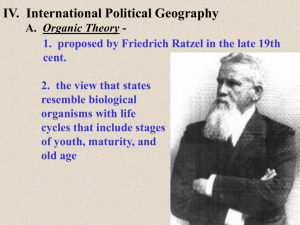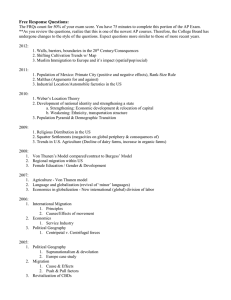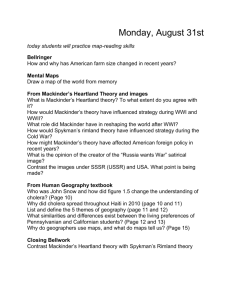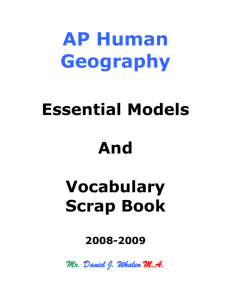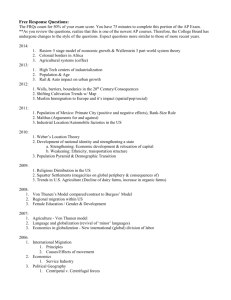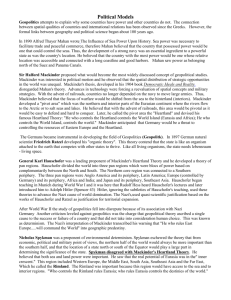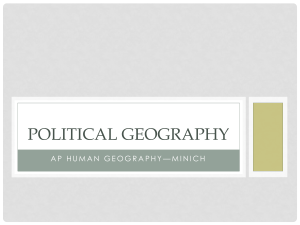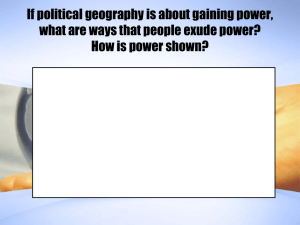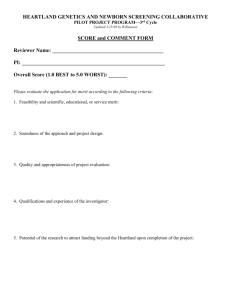Geostrategy: The Heartland and Rimland Theories
advertisement
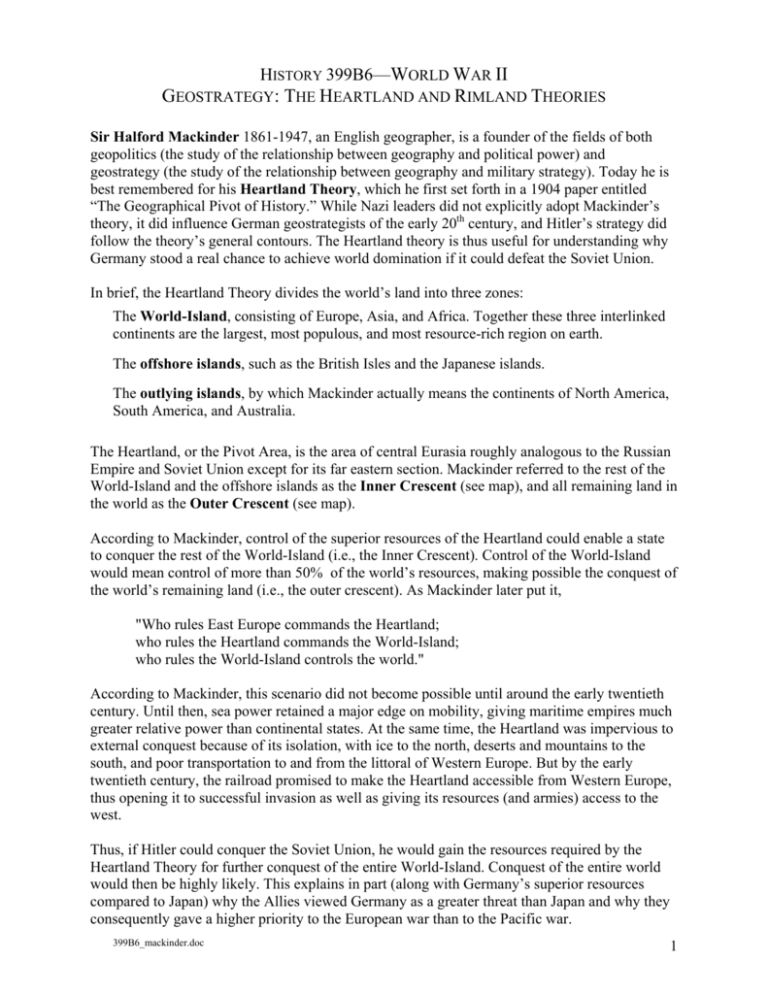
HISTORY 399B6—WORLD WAR II GEOSTRATEGY: THE HEARTLAND AND RIMLAND THEORIES Sir Halford Mackinder 1861-1947, an English geographer, is a founder of the fields of both geopolitics (the study of the relationship between geography and political power) and geostrategy (the study of the relationship between geography and military strategy). Today he is best remembered for his Heartland Theory, which he first set forth in a 1904 paper entitled “The Geographical Pivot of History.” While Nazi leaders did not explicitly adopt Mackinder’s theory, it did influence German geostrategists of the early 20th century, and Hitler’s strategy did follow the theory’s general contours. The Heartland theory is thus useful for understanding why Germany stood a real chance to achieve world domination if it could defeat the Soviet Union. In brief, the Heartland Theory divides the world’s land into three zones: The World-Island, consisting of Europe, Asia, and Africa. Together these three interlinked continents are the largest, most populous, and most resource-rich region on earth. The offshore islands, such as the British Isles and the Japanese islands. The outlying islands, by which Mackinder actually means the continents of North America, South America, and Australia. The Heartland, or the Pivot Area, is the area of central Eurasia roughly analogous to the Russian Empire and Soviet Union except for its far eastern section. Mackinder referred to the rest of the World-Island and the offshore islands as the Inner Crescent (see map), and all remaining land in the world as the Outer Crescent (see map). According to Mackinder, control of the superior resources of the Heartland could enable a state to conquer the rest of the World-Island (i.e., the Inner Crescent). Control of the World-Island would mean control of more than 50% of the world’s resources, making possible the conquest of the world’s remaining land (i.e., the outer crescent). As Mackinder later put it, "Who rules East Europe commands the Heartland; who rules the Heartland commands the World-Island; who rules the World-Island controls the world." According to Mackinder, this scenario did not become possible until around the early twentieth century. Until then, sea power retained a major edge on mobility, giving maritime empires much greater relative power than continental states. At the same time, the Heartland was impervious to external conquest because of its isolation, with ice to the north, deserts and mountains to the south, and poor transportation to and from the littoral of Western Europe. But by the early twentieth century, the railroad promised to make the Heartland accessible from Western Europe, thus opening it to successful invasion as well as giving its resources (and armies) access to the west. Thus, if Hitler could conquer the Soviet Union, he would gain the resources required by the Heartland Theory for further conquest of the entire World-Island. Conquest of the entire world would then be highly likely. This explains in part (along with Germany’s superior resources compared to Japan) why the Allies viewed Germany as a greater threat than Japan and why they consequently gave a higher priority to the European war than to the Pacific war. 399B6_mackinder.doc 1 Although beyond the scope of this course, an application of the Heartland Theory to the Cold War is also instructive. In 1942, geostrategist Nicholas J. Spykman (1893-1943) published America's Strategy in World Politics, in which he set forth a theory that combined those of Mackinder and leading naval theorist Alfred Thayer Mahan. This theory, called the Rimland Theory, argued that Mackinder’s Inner Crescent (which Spykman renamed the Rimland), was actually the pivotal area, having more resources than the Heartland and being, in Mahan’s words, a “debatable zone” subject to control by both the Heartland and by the maritime powers, thus giving sea power greater weight than Mackinder does even in light of railroad development. According to Spykman’s formula, “Who controls the Rimland rules Eurasia; Who rules Eurasia controls the destinies of the world.” While significantly different from the Heartland Theory, the Rimland Theory does share one major element with it: Under either theory, the successful Nazi conquest of the Soviet Union, which seemed possible in late 1941, would have left it poised to conquer the entire planet. 399B6_mackinder.doc 2 ?L c? ???r .. ?' r, r L;rr7LJ , ?? ? r h? ? i? rt ? I r r ? ??r. r? ? ? . , ?? ? ? r ?? r ? ? .r ,, ? ? r rr ? ? ? ? ? ? ?? ? r r .. ? ?.A R?i'A.?...' .. 'f;:10:OT. ?L ??? ? ?.. ?? ??t p ?,?.?r S ? ' ?r ???," ? aI i2 I ms O R 2 Pivot area--wholly continental. Potaewol/o THE NATU,RAL ;"al OF POWER. g ,'SEATS THE NATURAL SEATS OIner crescent-pa Outer crescent--wholly oceanic. Inner crescent--p
